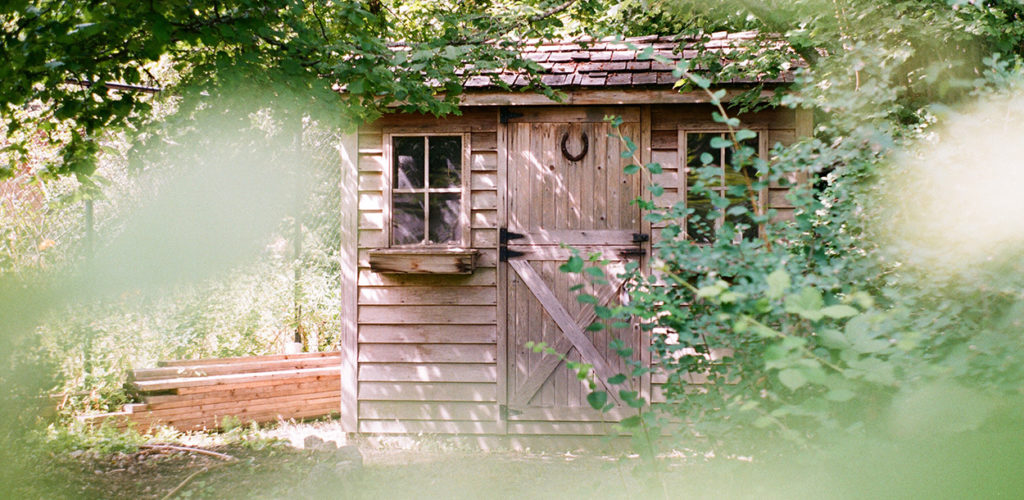After Jeni Nunn’s parents couldn’t find a condominium they could afford in the San Francisco Bay Area, she didn’t have to go far to find a solution. Using the proceeds from the sale of her parents’ condo in Washington D.C., Nunn built a 640-square-foot, wheelchair-accessible, one-bedroom accessory dwelling unit for them in her backyard.
“We were able to create exactly what they were looking for — one level, close to the grandkids. The lot is so deep and narrow that they even have their own backyard with a hot tub,” Nunn says.
Five years later, Nunn has moved from Santa Clara. Her parents still live in the ADU (accessory dwelling unit) and she rents out the main house. She plans to build an ADU at her new home in Campbell, but she knows it will be more difficult because of stricter zoning regulations in her new city — and she won’t have money from her parents’ house sale to help pay for it.
“We’re in the phase of trying to figure it all out,” she says.
ADUs, also known colloquially as in-law units, are secondary housing units on single-family residential lots. They include backyard cottages, enclosed garages and basement apartments. With single-family residential zoning dominating many American cities, ADUs potentially could provide a needed source of affordable housing in cities where it is scarce. An analysis conducted by the New York Times’ The Upshot found in a large number of cities, it is illegal on 75 percent of residential land to build anything other than a detached single-family home. In Arlington, Texas, 89 percent of residential land is single-family residential. Ninety-four percent of San Jose’s residential land is zoned for detached single-family homes. In Los Angeles alone, CityLab estimates there are about 400,000 single-family homes with two-car garages that could be converted into apartments.
Some cities are re-thinking single-family zoning, a tool used to maintain race and class segregation after racial zoning was ruled unconstitutional a little over a century ago. In December, Minneapolis became the first major U.S. city to eliminate single-family zoning. “There’s the potential for ADUs to create a lot of affordable housing,” says Kol Peterson, an ADU consultant in Portland. “But it’s going to take decades. ADUs are still in their infancy. Only four cities in the country — Portland, Los Angeles, Seattle and Austin, Texas — have more than 1,000 ADUs.”
Nunn’s story reflects two key points when it comes to ADUs. She is among a growing number of people who have built ADUs, which are considered by some as part of the solution to the housing crises many cities face. She is also illustrative of why more people aren’t building them — they live in places where zoning laws either prohibit or impede their construction and obtaining financing can be challenging.
“It’s an important piece of the solution to the housing crisis many cities are facing,” says Christopher Ptomey, executive director of the Urban Land Institute Terwilliger Center for Housing. “ADUs represent a strategy of growing importance that doesn’t take a lot of public subsidies to make it happen. In many cases, if cities just legalize it, people will do it.”
That’s what happened in Los Angeles after state legislators passed a law that made ADUs legal in all California cities. The law eliminated off-street parking requirements for many ADUs, including those within a half-mile of transit, in designated historic districts and attached to the existing house. In 2016, Los Angeles issued 117 building permits for ADUs, accounting for less than 1 percent of the city’s total housing unit construction permits issued. In 2018, the year after the law took effect, the city received 5,429 ADU permit applications. It issued 4,171 ADU permits, accounting for 20 percent of the total permits issued.
Earlier this year, Oregon became the first state to force cities to drop requirements for additional off-street parking for ADUs and mandates that property owners live in either the main house or the ADU. In an accessorydwellings.org blog post, Peterson called those requirements “poison pill regulations” found in the majority of codes in cities where ADUs are allowed. Passed in June, the Oregon law requires cities with populations of at least 2,500 people and counties with populations of greater than 15,000 residents to allow at least one ADU on lots zoned single-family residential.
In Washington, lawmakers failed to pass what the Sightline Institute labeled the most progressive accessory dwelling unit bill ever introduced at the state level. It would have eliminated all of the significant barriers that make it difficult for homeowners to add an ADU to their property. Those include off-street parking requirements, disproportionate impact and utility connection fees, mandates that the owner lives on the property, limitations on number and size of ADUs, occupancy limits and exterior design requirements. Lawmakers plan to re-introduce the legislation next year, says Nisma Gabobe, a research associate at Sightline.
In June, Seattle became the second major North American city to permit up to two ADUs on each property as zoned single family residential. “That is a big change for a major city,” she says.
Portland is considered a leader when it comes to ADUs, but they are found only on about two percent of eligible residential properties. One reason is financing, says Patrick Quinton, the former executive director of the Portland Development Commission and the co-founder and CEO of Dweller, a Portland-based company that builds and installs pre-fab ADUs.
Typically, homeowners wanting to build an ADU would have to refinance their homes or obtain a line of credit. Dweller offers a ground lease program — an agreement that allows it to develop the ADU property and lease the land for 25 years. When that time period is up, the land and the improvements are turned over to the property owner. After the ADU is installed, Dweller manages it as a rental unit and passes along 30 percent of the rent to the homeowner.
Quinton says his company gets up to 30 serious inquiries a month. While property owners may currently buy a unit from Dweller through traditional financing, new ground leases are on hold until the company secures additional capital. “It’s difficult for homeowners to finance ADUs,” he says. “We have to convince investors that they are safe and pay an attractive return.”
When callers are not offered ground leases, they often hang up, Quinton says. “We believe that they are low- to middle-income and have no other pathway to ADU ownership. Solving the financing gap is the biggest issue to growing the market. Right now, it’s folks who have already built up equity or have significant wealth.”
Ptomey of the Terwilliger Center says ADUs can open up wealthier neighborhoods to people who otherwise could not afford to live there, providing access to great education, retail and health care. “ADUs enable all of a city to contribute to solving the affordable housing crisis,” he says. “A critical benefit is enabling equity.”
However, consultant Peterson argues that combining ADU development with affordable-housing requirements can backfire. Attempts in cities such as Los Angeles and Washington D.C., to get homeowners to build ADUs for subsidized affordable housing have failed or are floundering because the additional regulatory burdens are too much to handle for homeowners already overwhelmed by being property developers and landlords, he says.
“If it’s regulated to be affordable housing, none will be built,” he says. “If it’s left unfettered, studies have shown roughly 20 percent of ADUs will be rented at less than market rate because of the altruistic nature of mom-and-pop landlords. About 10 percent have zero rent.”
##
This post is part of our Fall 2019 editorial series on land use and housing policy challenges and solutions. Download our latest FREE ebook based on this series: “How Racism Shaped the Housing Crisis & What We Can Do About It.”
Or take a look at the other articles in the series:
- Zoned apart: How the US failed to share land but should start today
- Timeline of 100 years of racist housing policy that created a separate and unequal America
- How pro-density advocates in Minneapolis took on single-family zoning — and won
- Bringing equity to the forefront of urban planning
- Can zoning reform undo “50 years of bad policy?”
- Segregation By Design author expects political battle between fair housing opponents and proponents
- How to ease the US housing crisis? Import strategic policy from abroad
- Cities at turning point: Will upzoning ease housing inequalities or build on zoning’s racist legacy?
- Author Richard Rothstein calls for new civil rights movement to address housing scarcity and injustice
- 8 must read books on US land use and housing policy









